On September 19, 1908 Satoshi Nakamura was born in Vancouver, British Columbia, Canada. He became a Japanese Baritone Opera Singer and Motion Picture Character Actor using the additional names of Tatsu Nakamura and Testsu Nakamura.
As a teenager Satoshi attended "Britannia Secondary School" and then enrolled in a music academy, becoming a baritone singer with appearances on Canadian radio programs. In 1940 he moved to Japan and enrolled in the "Nikkatsu Corporation's Acting Studio".
The "Nikkatsu Studio" was established in 1912 and is the oldest motion picture studio in Japan. Nakamura graduated from their acting school sometime in 1941. Prior to the Japanese attack on Pearl Harbor, Hawaii, and the entrance of the United States, officially, into World War 2.
In 1942 he became a contract actor for Toho Studios and would also teach other Japanese actors their English language parts. He was the Japanese dialogue coach, not actor, in the Frank Sinatra World War 2 motion picture "None But the Brave", released February 24, 1965, co-starring Japanese actor Tatsuya Mihashi as "Lieutenant Kuroki".
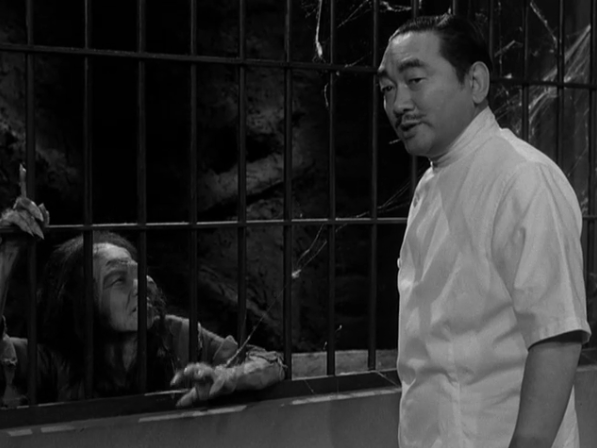
Above Satoshi Nakamura in 1959's "The Manster".
What Satoshi Nakamura actually did, while living in Japan during the Second World War, is mostly a blank. Besides enrolling in the previously mentioned "Nakkatsu Studio's" acting class. In 1941 Nakamura appeared on stage in a Japanese production of Georges Bizet's opera "Carmen". The following year saw the 33 year old singer sign his contract with Toho Studios, but any information concerning what else he might have done in 1942 is unknown. The same goes for the entire year of 1943. The next documented event for Satoshi Nakamura's was his first motion picture for Toho Studios, but that wasn't until February 1944. Again raising the question of what the Canadian citizen additionally was doing until the Japanese surrender in September 1945.
What Is A Character Actor?
Satoshi Nakamura was a contract character actor in the Toho Studio's system. That meant he might have a film role so small that he never said a word and was on the screen for only a couple of minutes. Yet, in that type of role, the actor might have performed some action that stayed in the film viewers mind forever.
Think of American George Raft, just standing at a bar, never saying a word, flipping a coin in 1932's "Scarface". That simple action drew the attention of the audience and became an trademark action for Raft throughout his tough guy career. He even parodied himself while standing at a bar flipping a coin in the 1967 "James Bond" spoof "Casino Royale".
A character actor might also have a role with a few lines to say, or in some cases a minor supporting role. Frequently character actors received no on screen credit. No matter how big or small his role, but was always essential to the movement of the plot.
Again, thinking American, such as Denver Pyle or Harry Dean Stanton, if the names are unknown to my reader. Look them up.
Selections From Satoshi Nakamura's Forty-Two Role Motion Picture Career
His first motion picture was a Japanese World War 2, Home Front, propaganda film entitled "Ano hata o ute (Shoot the flag-the end of Corregidor)" or "Fire on the flag-the end of Corregidor".
It was released on February 10, 1944. The picture opened with a narrator telling the audience the date is December 8, 1941 and Japan has "accepted the challenge of America and Britain's enslavement of Eastern Asia". Japan is shown sending soldiers to fight the Western powers. "Nakamura Satoshi", his proper Japanese name in English, portrayed a Japanese soldier named "Nakamura Iku". How big the role was and what he did with it. I could not locate.
Next there is a blank three-year period between Nakamura's first and second motion picture "Kofuku emo shotai". That feature wasn't released until November 11, 1947. It was also the first time the actor was billed as "Tetsu Nakamura".
Two features later, found sixth billed Satoshi Nakamura, in the role of the leader of a Communist spy ring named "Mr. Oyama". The American made motion picture was entitled "Tokyo File 212". The movie was first released January 24, 1951 in Japan and was directed by George Breakston.
French-American Breakston had played "Beezy" in seven of Mickey Rooney's "Andy Hardy" films in the 1930's and early 1940's. Shortly, after the start of the American occupation of Japan, Breakston went there and made several motion pictures starting with this feature.
"Tokyo File 212" was released in Japan on January 26, 1951 and the United States on May 31, 1951.
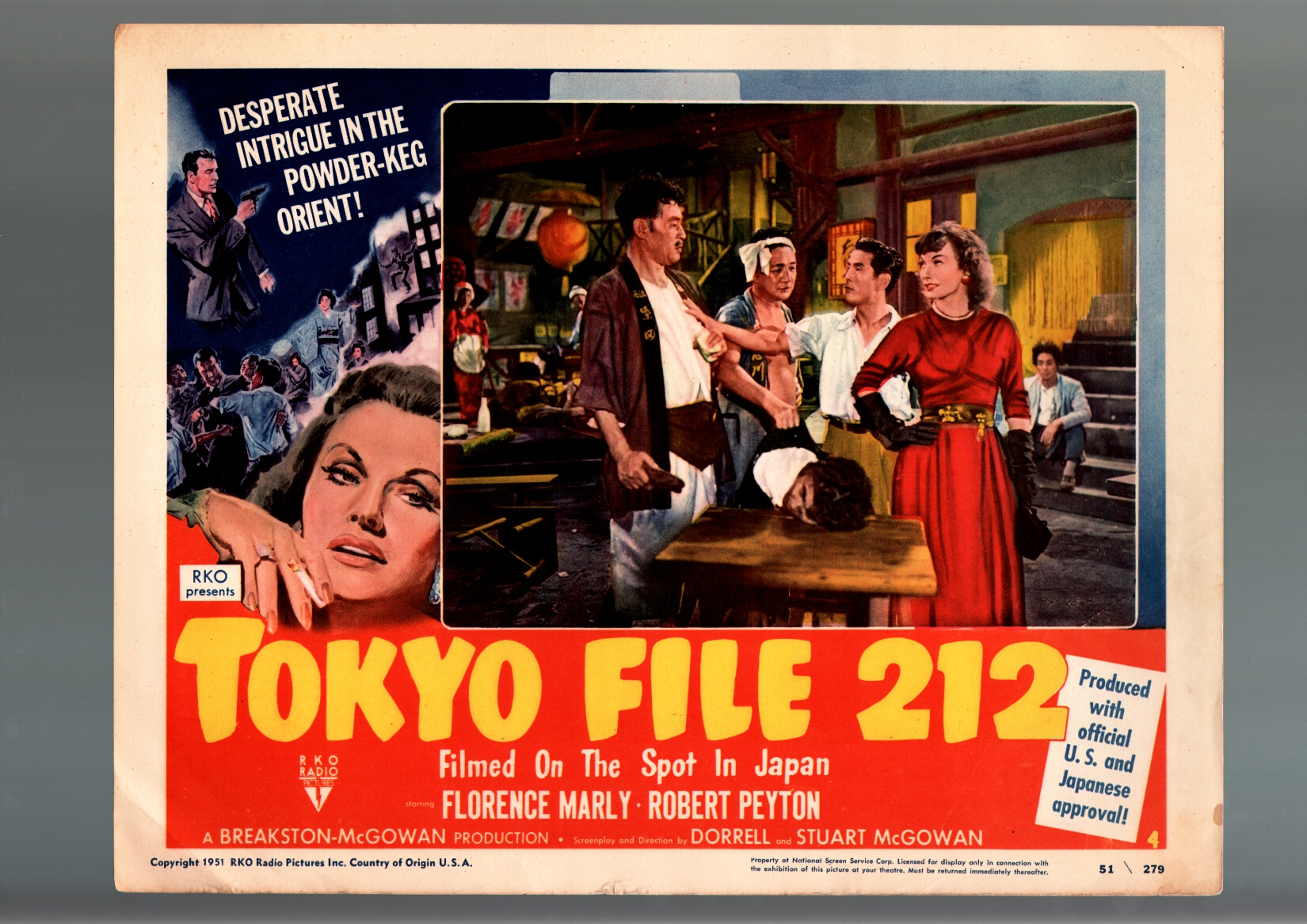
Above, in the picture insert, is Nakamura on the far left with the pistol in his hand.
The actors next motion picture was another of the crime dramas directed by George Breakston. Which were creating an image for the actor. The title was "Oriental Evil", released June 29, 1951, and starred actress Martha Hyer. Hyer had been working in "B" movies and American television since 1946. Tetsu Nakamura had third billing as "Noritomu Moriaji".
Next was a little American propaganda made in Japan supposedly to educate American viewers on Kabuki theater, the Buddhist religion and Geisha houses. The film was a comedy adventure entitled "Geisha Girl" and was once again directed by George Breakston and starring Martha Hyer. Whose role was anything but the main one the billing suggested. The real stars were American actors Steve Forrest and Archer MacDonald. Tetsu Nakamura was fourth billed as portraying "Tetsu Nakano".
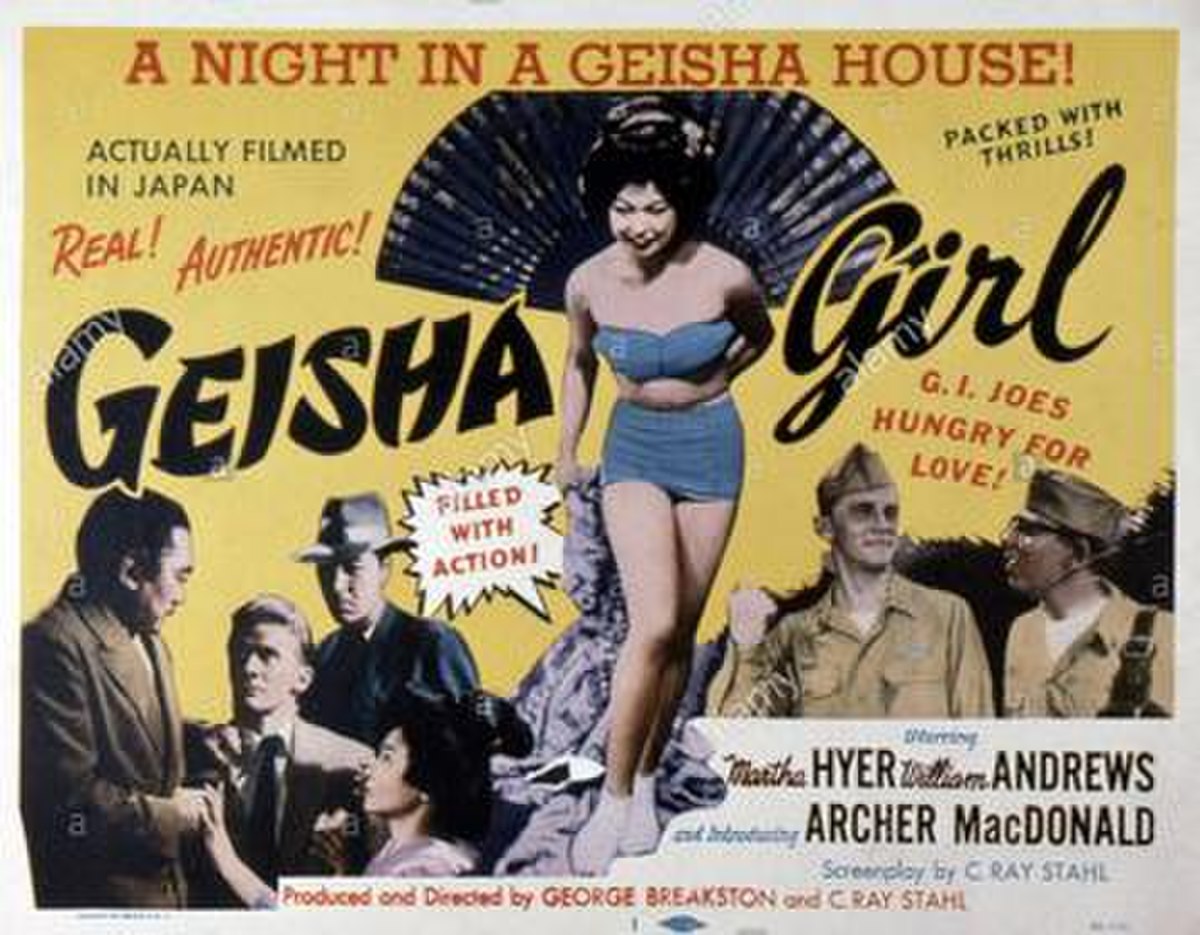
To stop a little confusion the name William Andrews on the above poster, was actually Steve Forrest's birth name. Although it doesn't appear on any of the cast listings for this May 2, 1952 release. Nakamura is seen at the far lower left.
Three motions pictures later, found "Opera Baritone" Satoshi Nakamura portraying the role of "Yamadori". The feature was an Italian and Japanese co-production of American playwright and producer David Belasco's adaption of Giacomo Puccini's opera "Madame Butterfly". The film would be released first in Japan on December 24, 1954, in Italy on June 3, 1955 and come to the United States on April 23, 1956. The movie was filmed at the "Cinectta Studios" in Rome.
Another film followed and then the first of many Toho Studio Science Fiction Thrillers directed by the great Ishiro Honda with special effects by the equally great Eiji Tsuburaya. I would see it in the dubbed English language version released on May 15, 1959 in the United States. The actual motion picture had been released in Japan on December 28, 1957, two years before.
CHIKYU BOEIGUN (EARTH DEFENSE FORCE)

_001.jpg)
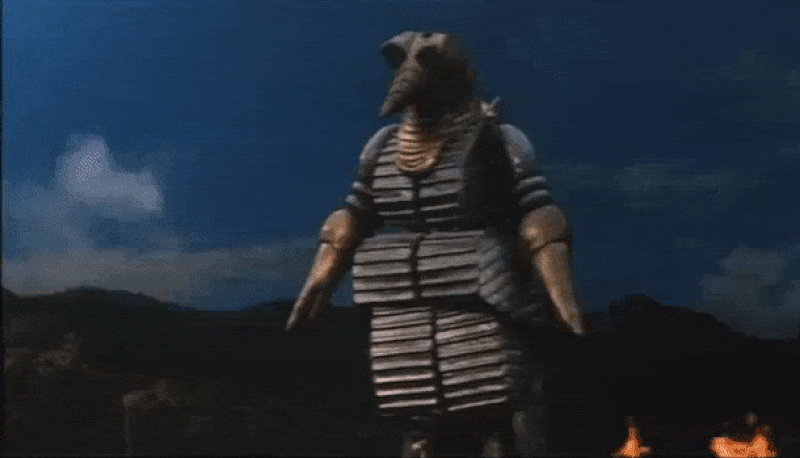
The movies five leads were Kenji Sahara as Joji Atsumi". Sahara had a bit role in Toho's 1954 "Gojira" and in 1956 was the leading actor, billed as Kenji Sawara, portraying "Shigeru Kawamura" in "Sora no Daikaiju Radon (Giant Monster of the Sky, Radon)" aka: in 1957 as "Rodan".
Yumi Shirakawa was "Etsuko Shiraishi" and had been the female lead "Kiyo" in "Sora no Daikaiju Radon".
Momo Kochi portrayed "Hiroko Iwamoto". Kochi has portrayed "Emiko Yamane" in 1954's "Gojira" and "Machiko Takeno". In the sometimes overlooked Ishiro Honda 1955 "Ju jin yuki otoko (Beast Man-Snow Man)".
Akihiko Hirata portrayed "Ryoichi Shiraishi". Hirata portrayed "Dr. Daisuke Serizawa" in 1954's "Gojira" and "Professor Kyuichiro Kashiwagi" in 1956's"Sora no Daikaiju Radon". His role was considerably shorten in the 1957 English language dub "Rodan".
Takashi Shimura portrayed "Dr. Tanjiro Adachi". Shimura had portrayed the woodcutter in Akira Kurosawa's 1950 classic "Rashomon". In 1954 led the director's "Seven Samurai" and later that year played "Dr. Kyohei Yamane" in "Gojira".
Look over the complete cast list for "Chikyu Boeigun" and my reader will find Tetsu Nakamura at eleventh billing in the role of "Dr. Koda".
The plot is about aliens coming from a dying radioactive planet and wanting to mate with Earth women. As a mean of extending their race. They ask for only a small portion of land in Japan for their Earth base, but in reality create an extensive underground base going beyond the asked for limits.
The "Earth Defense Force" is formed, the battle against the invaders begins. and the rescue of the captured Earth women will take place.

Above in the white suit is Takashi Shimura, next is Tetsu Nakamura and beside him is Kenji Sahara. Below Nakamura is second from the left.

Side note for those of my readers who are into 1960's "Garage Bands". In 1962, in Bay City, Michigan, a group of young musicians, who were fans of this movie, formed what became a trend setting band called "Question Mark and the Mysterians".

Below the guys in 2016.

Tetsu Nakamura was immediately back in another classic Toho Science Fiction feature entitled "BIJO TO EKITAI-NINGEN (BEAUTY AND THE LIQUID PEOPLE)". The original version was released in Japan on June 24, 1958.

However, when it came to the United States, on May 28, 1959, the story had been cut down and given the title "THE H-MAN",
Yumi Shirakawa portrayed "Chiako, a singer in a night club" and was the picture's star.
Kenji Sahara portrayed "Dr Masada".
Akihiko Hirata portrayed "Police Inspector Tominaga".
While thirteenth billed Tetsu Nakamura was in a familiar role as "Mr. Chin, gangster".
The Japanese version starts out with a variation of the story of the real "Lucky Dragon #5". The fishing trawler that entered the danger zone after the American Castle-Bravo H-Bomb test on Bikini Atoll. Another variation had been used by Toho Studios for 1954's "Gojira".
A liquid person, a radioactive mass that looks human in shape, comes on board the fishing trawler and turns the entire crew into versions of itself. The co-called "H-Man" of the American title.
While the American version starts by showing a rising nuclear cloud and then cuts to a drug deal in progress. Which occurs in the original version, but after the events on the fishing trawler. Which made what follows in the story a lot clearer.
Both films are basically a detective thriller revolving around the singer "Chiako" and the mysterious disappearance of her husband. Whose clothing seem to suggest he just melted while making the drug deal.
Below Tetsu Nakamura as "Mr. Chin".

Another regular gangster picture followed and then it was back to director George Breakston and a non-Toho Science Fiction and Horror entry. I had read about a motion picture entitled "THE SPLIT" in an issue of "Famous Monsters of Filmland". This was a Japanese-American co-production. The film sounded great, but after that I never saw a release of the picture. One weekend I went to the Majestic Movie Theater, now a legitimate theater off of the Third Street Promenade, in Santa Monica, California. An old stomping ground of teenage Lloyd to see a motion picture entitled "THE MANSTER". The film turned out to be the re-titled "The Split".
Under the translated title of "THE TWO-HEADED KILLER". The feature film had been released, first, in Japan in July 1959 and wouldn't reach the United States until November 24, 1960.

Note the above Japanese poster mentions "The Split" and there were posters made prior to the title change for the United States in that name.

Note below how the title was modified after the change was decided upon.

The motion picture starred Peter Dyneley as "Larry Sanford". Dyneley was a legitimate stage actor who switched to primarily television programs, in 1954, for the United States, the United Kingdom and Japan.
Actress June Hylton portrayed his characters wife "Linda Stanford". Hylton was also Dyneley's real life wife born in London, England. She appeared in both films and television in the United Kingdom.
In probably his only leading role. The third star was Satoshi Nakamura as "Dr. Robert Suzuki". The weird cast lists for this motion picture. Showed Nakamura as actually "Tetsu Nakamura" using the stage name of "Satoshi Nakamura.
The plot has an American Reporter, "Larry Sanford", sent to Japan to interview eccentric scientist "Dr. Robert Suzsuki". He gets more than an interview as the doctor injects him with an experimental serum, he had previously used on his wife in the first picture of this article, that turns "Sanford" into "The Manster". Obviously meant to be "The Monster", but much more catchy by substituting the letter "A" for the letter "O".
Think "Radon" in the Japanese film having the second and fourth letters transposed for the English dub as "Rodan".
"The Manster" ends with the "Sanford" doing "The Split" into two distinct characters and the bad one is killed and the good one gets reunited with his wife.

Above Satoshi Nakamura, as "Dr. Robert Suzuki", after seeing how well his experiment is going. Below Peter Dyneley in different stages of "The Manster".

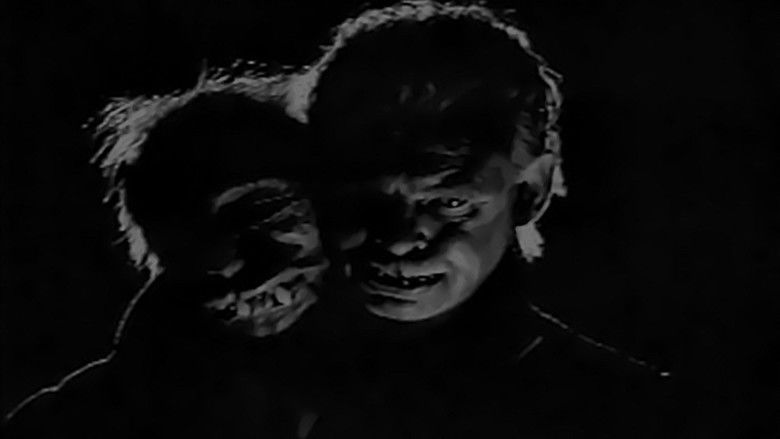

Three more motion pictures followed and then Toho Studio's released "HAWAI MIDDOUEI DAIKAIKUSEN: TAIHEIYO NO ARASHI (HAWAII-MIDWAY BATTLE OF THE SEA AND SKY: STORM IN THE PACIFIC OCEAN)". The picture ran 118 minutes and was released in Japan on April 26, 1960.
This is one of the best motion pictures about the bombing of "Pearl Harbor" and the "Sea Battle for Midway Island". It's told from the Japanese perspective ten years before 1970's revisionist "Tora,Tora, Tora" was released,
"Storm Over the Pacific", shorten title, had outstanding model work by Eiji Tsuburaya and was directed by Shue Matsubayashi. About every available male actor at Toho Studios was in the film.
The large cast was headed by Toshiro Mifune as "Rear Admiral Tamon Yamaguchi". Toshiro Mifune was a major Toho Star and Internationally known for Akira Kurosawa's 1949 "Stray Dog", 1950's "Rashomon", 1954's "Seven Samurai" and 1957's Japanese "Macbeth", "Throne of Blood" and other features by different directors.
There were only seven other acting roles that received on screen credit. Tetsu Nakamura was part of the cast without a name assigned to his role. There were thirty-seven other such actor roles in the original Japanese production.
When the film came to the United States it had been dubbed into English, shorten by 28 minutes, and released on November 29, 1961 as "I BOMBED PEARL HARBOR". The release date was for the twentieth anniversary of the attack.
My article on this motion picture and others made, starting immediately, after the original December 7, 1941 attack for propaganda, by both sides, through director Michael Bey's 2001 movie can be found at:
http://www.bewaretheblog.com/2016/12/i-bombed-pearl-harbor-december-7-1941.html
On December 11, 1960, the Japanese audience saw the character actor as a "Journalist" in "GASU NINGEN DAI 1 GO (GAS HUMAN BEING #1)". Four years later the motion picture would come to the United States on May 20, 1964, as "THE HUMAN VAPOR".
In the above out of focus lobby card. Tetsu Nakamara, billed twenty-first, is the second person looking into the cell from the right. The story is about a librarian who is in love with a young woman but is scientifically given the ability to turn into a vapor. It's part the invisible man, part love story and part detective thriller.
In 1948 author Pearl S. Buck published a novel "The Big Wave" aimed at a teenagers. Buck worked with Polish American producer Tad Danielewski to develop the novel as a 1956 television film. Then in 1961, she worked again with Danielewski to develop the novel for the motion picture screen.
This is the story of a young boy named "Toro". Whose fishing village is threatened by a volcano that periodically erupts and the tidal waves it creates. The motion picture was made in Japan by an American film company, but never released in that country.
It premiered in the United States on April 2, 1961. The film starred Japanese born actor Sessue Hayakawa. Who became a silent screen idol to many young women and a character actor over the years! Probably his most known role was as the prisoner of war camp commander "Colonel Saito" in David Lean's Oscar Winning 1957 movie "The Bridge Over the River Kwai". Hayakawa also appeared as Jerry Lewis' future father-in-law in 1958's "The Geisha Boy".
Tetsu Nakamura portrayed "Toro's father" in this all-Japanese cast either speaking English,or being dubbed.
Skipping another forgotten Japanese motion picture and we come to a Toho Science Fiction film that introduced a kaiju that would become almost as famous as "Gojira".
MOSURA released in Japan July 30, 1961

Directed by Ishiro Honda.
In 1948 author Pearl S. Buck published a novel "The Big Wave" aimed at a teenagers. Buck worked with Polish American producer Tad Danielewski to develop the novel as a 1956 television film. Then in 1961, she worked again with Danielewski to develop the novel for the motion picture screen.
This is the story of a young boy named "Toro". Whose fishing village is threatened by a volcano that periodically erupts and the tidal waves it creates. The motion picture was made in Japan by an American film company, but never released in that country.
It premiered in the United States on April 2, 1961. The film starred Japanese born actor Sessue Hayakawa. Who became a silent screen idol to many young women and a character actor over the years! Probably his most known role was as the prisoner of war camp commander "Colonel Saito" in David Lean's Oscar Winning 1957 movie "The Bridge Over the River Kwai". Hayakawa also appeared as Jerry Lewis' future father-in-law in 1958's "The Geisha Boy".
Tetsu Nakamura portrayed "Toro's father" in this all-Japanese cast either speaking English,or being dubbed.
Skipping another forgotten Japanese motion picture and we come to a Toho Science Fiction film that introduced a kaiju that would become almost as famous as "Gojira".
MOSURA released in Japan July 30, 1961

Directed by Ishiro Honda.
The screenplay was based upon a popular 1961 serialized story "Hakko Yosei To Mosura (Luminous Fairies and Mosura)" written by Takehiko Fukunaga, Shinichiro Nakamura, and Yoshie Hotta.
The screenplay was written by Shinichi Sekizawa, 1958's "Daikaiju Baran (Large Monster Baran)" aka: "Varan the Unbelievable" and 1959's "Uchu Daisenso (Space War) aka: "Battle in Outer Space".
Furanki Sakai portrayed news reporter "Zen'ichiro Fukuda" in the Japanese "Mosura" and was called Zen-chan" aka: "Bulldog" in the American version "Mothra".Hiroshi Koizumi portrayed "Dr. Shin'ichi Chujo"and would repeat the role forty-two years later in "Gojira Tai Mosura Tai Mekagojira: Tokyo S.O.S. (Godzilla x Mothra x Mechagodzilla: Tokyo S.O.S.)". aka: "Godzilla: Tokyo S.O.S."
Kyoko Kagawa portrayed photographer "Michi Hanamura".
Jeri (Jerry) Ito portrayed villain "Keraruku Neruson" in "Mosura" and was "Clark Nelson" in "Mothra".
Probably the most remembered duo from this film were singing sisters Emi and Yumi Ito known as "The Peanuts". The singing twins portrayed the "Shobijin", or the fairies of "Infant Island". Below they have been captured by "Neruson".

Seventh billed Tetsu Nakamura portrayed "Neruson", or "Nelson's" body guard.
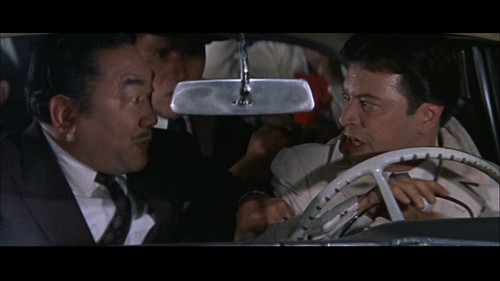
Above Tetsu Naamura and Jeri Ito at the film's climax.
Overview of the Basic Story:
During a typhoon, the merchant ship "Dani-Gen'you Maru" is run aground on "Infant Island", believed deserted, and used primarily for nuclear testing by the "Rolisican Government". Four survivors are rescued and brought to a hospital for tests related to radiation exposure.
There is supposed to be no press permitted, but newspaper reporter "Snapping Turtle Fukuda" and photographer "Michi Hanamura" have worked their way into the group of scientists and she snaps a photo, exposing the two. Which leads to the head scientist to permit them to stay. The four men are found to be completely radiation free and when questioned. Two things are revealed, there are living natives on "Infant Island", and they gave the men berries that kept them safe from any lingering radiation.
Next, "Fukuda" and "Hanamura" are told by the newspaper editor to get pictures of and an interview with linguist and anthropologist "Dr. Shin'ichi Chujo", who hates to be photographed. This actually leads to a friendship between the three and curiosity over "Infant Island".
The "Rolisican Government" organizes an expedition to the island to find out what is actually happening there. There is a large gathering at the "Rolisican Government's" ship prior to it leaving Japan and "Snapping Turtle" shows his ingenuity and is able to sneak onboard. He will be discovered at sea, but becomes "Dr. Chujo" somewhat assistant.
The island turns out to be inhabited by a tribe of natives that worship a God named "Mosura". "Dr. Chujo" while exploring the island, discovers the twin "Shobijin", who save him from a "Vampire Plant", and tablets an ancient language. Upon hearing of both, "Keraruku Neruson", a profiteer, attempts to capture the twins, but is stopped by both "Fukuda" and "Chujo". The expedition returns to Japan, promising the "Shobijin"" not to reveal the truth about the island to the general public. However, "Neruson" and his main henchman return to "Infant Island" and capture the "Shobijin", and brought back to his night club to perform.
"Senichiro 'Sen-chan' Fukuda", "Dr. Shin'ichi Chujo", and "Michi Hanamura", attempt to get "Neurson" to return the twins to "Infant Island", but he refuses. This leads to run-ins with the profiteer's henchman and that leads to the "Shobijin" singing a song that telepathically is heard by the "Infant Islanders" and "Mosura's" egg, which opens to reveal a larva caterpillar form, portrayed by Naruo Nakajima and Katsumi Tezuka, breaking free and heading for Japan to rescue the two tiny priestesses.
The larvae arrives in Tokyo and is met by the military, but is unstoppable in its search for the "Sobijin". Eventually, it spins a cocoon on "Tokyo Tower" and the military just looks on as they decide their next step in destroying "Mosura". After a short time, out of the cocoon comes the moth form.


The Japanese public who enjoyed the shows "Neurson" gave with the singing twin "Shobijin". Now, turns on him, demanding that he turn the twins over to the government. Instead, with his henchman, the two attempt to flee to the perceived safety of "Rolisica" and "New Kirk City" with the twins. Which does not work as "Neurson" planned, because the people there, recognize him also.
Below, "Neurson's henchman" is placed in custody , by a law enforcement officer him at the film's climax. "Neurson" attempts to get away and is killed. The rescued "Shobijin" are turned over to "Dr. Chujo".

After seeing the cross on a nearby church, "Dr. Chujo" realizes how to call "Mosura". He instructs the placing of one of the tablet symbols from "Infant Island", upon one of the "New Kirk City" airport's runways, and "Mosura" lands to take the "Shobijin" home.
The English language version cuts out most of the "Infant Island" natives singing to "Mosura" and "Dr. Chujo" seeing several different stone tablets, with subtitles explaining what the native language says on each. Which sets the stage for the tablet "Dr. Chujo" uses to get "Mosura" to the airport during the picture's climax.
The actual screenplay ending, as originally filmed by Ishiro Honda, takes place near a volcano with "Dr. Chujo" as a hostage of "Neurson". "Mosura" comes to his rescue, and flapping her wings, sends "Neurson" into the volcano.
However, the major funding for this motion picture was coming from "Columbia Pictures", in the United States. The agreed contract for funding the film with "Toho Studios" had a different ending. It stipulated that "New Kirk City" must look like an American city, because"Columbia Pictures" was thinking of their English language re-edit, and the climax that would take place there. So, even though the original ending had been filmed, it was dropped, and the "Columbia Pictures" ending became the picture's ending.
Also, notice, in either "Mosura", or "Mothra". When "Neurson-Clark Nelson" and his henchman, are driving through "New Kirk City". The audience sees a shot of the freeway interchange between the Los Angeles's 101 and Harbor freeways.

The above title translates as "THIEF". Although others translate it as "THE GREAT BANDIT". The original Toho Studios production was released in Japan on October 26, 1963. However, when I saw it. on March 3, 1965. the American International dubbed version was entitled "THE LOST WORLD OF SINBAD:
+Original_1.jpg) "
"While my English subtitled DVD version, from Toho International, calls the motion picture "THE MAGNIFICENT THIEF" and my reader gets the idea titles mean nothing.
The film has five main stars and they are:
Toshiro Migune portrayed "The Thief" of the title, "Suezaemon Naya", aka: "Luzon", but in the English language AIP dub. Mifune was now the more popular "Sinbad the Sailor".
Tado Nakamura portrayed "The Chancellor". He started his acting career as a "Policeman" in the 1955 "Counterattack of Godzilla (Godzilla Raids Again)" and followed that as an army officer in 1957's "Earth Defense Force". Later Tado Nakamura appeared in many samurai and detective thrillers. He was in Akira Kurosawa's 1958 "The Hidden Fortress" with Tohsiro Mifune and director Kihachi Okomoto's 1960 "The Last Gunfight", about modern Japanese gang warfare in a small city, starring Mifune. Often Tado Nakamura was the bad guy to Mifune's good.
Mie Hama portrayed "Princess Yaya". Internationally, she was known as "Kissy Suzuki" in the 1967 "James Bond" entry "You Only Live Twice". For Toho Hama had appeared in 1962's "King Kong vs Godzilla" and would be seen as "Madame "X"" in the Japanese version and "Madame Piranha" in the English language version of 1967's "King Kong Escapes".
Kumi Mizuno portrayed "Miwa, the Rebel Leader". Mizano was a regular in Toho Science Fiction and Horror films. Among these are 1962's "Gorath", 1963's "Matango", 1965's Frankenstein vs Baragon the Subterranean Monster (Frankenstein Conquerors the World)" and its Japanese direct sequel 1966's "Frankenstein's Monsters: Sanda vs Gaira". Which was re-edited for the English language release as "War of the Gargantuas".
Ichiro Arishima portrayed "Sennin the Wizard". He was a comic actor and portrayed the head of the pharmaceutical company, "Mr. Tako", in 1962's "King Kong vs Godzilla". That role is a lot larger and more interesting in the actual Toho version of the picture and not the edited, with additional American footage, English language version by producer John Beck..
Tetsu Nakamura was seventeenth billed as the "Chief Archer".

Above Kumi Mizuno and Toshiro Mifune. Below Mifune and Mie Hama.

The following lobby card is of Toshiro Mifune and Tetsu Nakamura. The characters become friendly enemies.

The basic plot has the pirate, "Luzon", loosing his treasure and ship in a battle. He lands on land and meets and befriends the wizard. Gets involved, literally with the Rebel Leader, while attempting to save the Princess from the evil Chancellor and the witch who protects him. The story is good old fashion fun.
For those of my readers really into "Sinbad" movies. My article "SINBAD (SINDBAD) THE SAILOR: From Popeye to 2016 Japanese Anime", which includes the three Ray Harryhausen features, can be read at:
http://www.bewaretheblog.com/2018/05/sinbad-sindbad-sailor-from-popeye-to.html
On December 22, 1963 Tetsu Nakamura had the role of a "Warship Captain" in the Toho production "KAITEI GUNKAN (UNDERSEA WARSHIP aka: SUBMARINE WARSHIP)".
However, when American International Pictures re-edited the feature film and dubbed it for United States release on March 11,1965. The title had been changed along with some dialogue. Which, like in 1954's "Gojira", was critical of the United States during the Second World War. The AIP picture was now called "ATRAGON" and that was also the name of the "Undersea Warship" instead of the original "Gotengo".
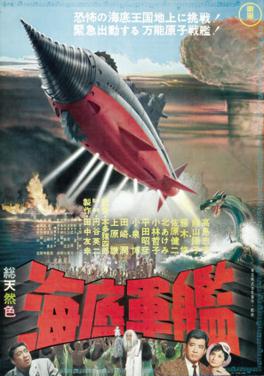

The plot was an old one about the "Queen" of the "Mu Empire" attempting to re-conqueror the surface World. This idea had been used on film first in of all things a Gene Autry Western Chapter Serial from "Mascot Pictures". That was 1935's "The Phantom Empire".

Toho's "Undersea Warship" is a flying submarine, as I said named the "Gotengo", built in secret by a submarine crew that disappeared at the end of world war 2. Whose commander wants to use it to restore Japan's former glory and is against helping stop the "Mu" empire. Unless that action is the first to bring back Japan's superiority.

Above the Toho "Mu Empire's" queen and below the 1935 Mascot Pictures "Mu Empire's" queen and Gene Autry.

My article "ATLANTIS, LEMURIA AND MU: The Lost Continents in Science Fiction Movies" will be found at:
http://www.bewaretheblog.com/2018/04/atlantis-lemuria-and-mu-lost-continents.html
Six motion pictures later and Tetsu Nakamura was in a "James Bond" rip off entitled "KOKUSAI HIMITSU KEISATSU: XETTAI ZETSUMEI (INTERNATIONAL SECRET POLICE DEATH" released in Japan on February 11, 1967 and released in the United States, no date indicated, as "THE KILLING BOTTLE".

Tetsu Nakamura portrayed the "Head of ZZZ Hong Kong Branch Office". The secret agent that reports to him, and is seen above, is named "John Carter". In his third Toho motion picture was American actor Nick Adams billed in the Japanese original as "Nikku Adamusu".
The next feature film for Tetsu Nakamura was an interesting production. The movie was actually supposed to be an American science fiction picture that was to have been shot in Japan, but for American release only.
Ted Sherdeman was the original producer and screenplay writer. After finishing his screenplay he hired and sent an American cast to Japan. However, before the film really started filming. Sherdeman had to file for bankruptcy and Toho Studios picked up the cost of the motion picture. The majority of the cast, including the lead, now became Japanese actors.
The picture was still filmed in English and three of the main Japanese cast spoke their lines in fluent English, but the other Japanese cast members were dubbed. When the motion picture was released in Japan, all the speaking roles, including the three Japanese actors who spoke English, were dubbed by Toho International into that language in China.
The American title was "LATITUDE ZERO" and the film was released in Dallas, Texas on July 29, 1969. The Japanese dubbed version translated as "LATITUDE 0 OPERATION".
The following poster is a hybrid of both the English language and Japanese language films.

The American Actors:
Joseph Cotton portrayed the dual roles of "Captain Craig McKenzie" and "Commander Glenn McKenzie". Cotton had appeared in both Orson Welles 1941 "Citzen Kane" and 1942's "The Magnificent Ambersons". In 1946 he had co-starred with Gregory Peck and Jennifer Jones in director King Vidor's western "Duel in the Sun" that got the lurid moniker of "Lust in the Dust". In 1949 Cotton starred with Welles in director Carol Reed's film-noir "The Third Man" and he co-starred with Marilyn Monroe in director Henry Hathaway's "Niagara".
Cesar Romero portrayed the dual roles of "Dr. Malic" and "Lieutenant Hastings". Romero was the first actor to portray "Doc Holliday", on the motion picture screen, in 1939's "Frontier Marshall" with Randolph Scott as "Wyatt Earp". Just before that film, Cesar Romero had taken over the motion picture series role of "The Cisco Kid". In 1951 he starred in the science fiction film "The Lost Continent" and of course portrayed "The Joker" on televisions "Batman".
Richard Jaeckel portrayed "Perry Lawton". Jaeckel was a solid supporting actor mostly in war and western movies. Among his films are John Wayne's 1949 "Sands of Iwo Jima" , Gregory Peck's 1950 western "The Gunfighter", director Robert Aldrich's 1956 war film "Attack", the Glenn Ford and Jack Lemmon 1958 "Cowboy", James Cagney's biography of Admiral Halsey in 1960's "The Gallant Hours", 1967's "The Dirty Dozen", and 1968's "The Devil's Brigade".
Patricia Medina portrayed "Lucretia". Among her roles was co-starring with Donald O'Connor in 1950's "Francis". The first film in Universal Pictures "Francis the Talking Mule" series. Medina co-starred in the same years "Abbott and Costello in the Foreign Legion". Appeared in many Arabian Knight style features and co-starred with Karl Malden in the 1954 3-D feature "Phantom of the Rue Morgue". In 1956 Patricia Medina co-starred with Guy Madison in "The Beast of Hollow Mountain". This was the first version of Willis O'Brien's "Gwangi" story. Although O'Brien did not animate it. Patricia Medina was the wicked queen in the 1961 ice skating "Snow White and the Three Stooges".
Linda Haynes portrayed "Dr. Anne Barton". Prior to this film she had a small non on-screen credited role in the James Coburn 1967 "In Like Flint", but she would appear in 12 other features before calling off acting. However, those films do include Pam Grier's 1973 "Coffy", Paul Newman and Joanne Woodward's 1975 "The Drowning Pool" and Robert Redford's 1980 "Brubaker".
The Four Main Japanese Cast Members
Akira Takarada portrayed the actual first billed role of "Dr. Ken Tashiro". English speaking Tararada was in two classic Ishiro Honda directed and Eiji Tsuburaya costumed and effects Toho films. The first, and also his actual first movie role, had Takarada as "Hideto Ogata" in 1954's "Gojira". In the second feature "Ju Jin Yuki Otoko (Beatman Yukio)" he was "Takeshi Iiima"
Masumi Okada portrayed "Dr. Jules Masson". Between 1955 and 2006 the English speaking actor appeared in 100 different roles. He also produced two of the most chilling Japanese films. Both are based upon an equally chilling 1999 novel, and title of the first film, about school children being used in a game of death in a futuristic society. The novel became 2000's "Battle Royale" and its sequel was 2003's "Battle Royale 2". These films make "The Hunger Games" novel and movie series look like a Walt Disney cartoon.
Akihiko Hirata portrayed "Dr. Sugata".
Tetsu Nakamura portrayed "Dr. Okada".
The basic story has Doctors "Tashiro","Masson" and journalist "Lawson" trapped undersea in a bathysphere. They are rescued by 200 year old "Craig McKenzie" in his submarine the "Alpha". The submarine was launched back in the early 1900's. "McKenzie" is taking the trio to his base at Latitude Zero, but on their way the "Alpha" is attacked by a rival submarine the "Black Shark" created by "Dr. Malic".

The "Alpha" arrives at "McKenzie's" base which is a Utopian civilization with fantastic creatures and is located fifteen miles under the sea bottom at the juncture of the Equator and the International Date Line. The three become involved with a conflict between "McKenzie" and "Malic" and in the end only "Lawton" wants to return to the surface world. Where he will be rescued by a United States Navy Ship and meets officers "Glenn McKenzie" and "Lt. Hastings" much to his surprise.
Below stills of Tetsu Nakamura.

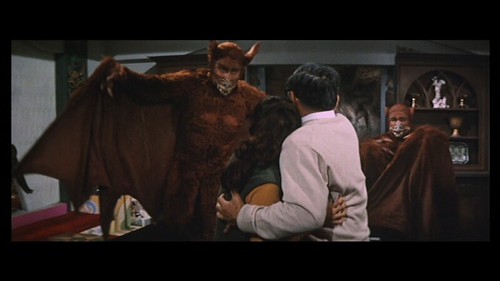
Below left to right Matsumi Okata, Joseph Cotton and Richard Jaeckel.
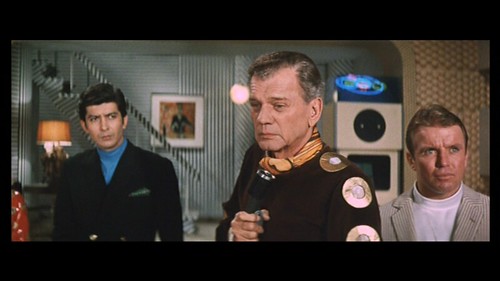
Below Patricia Medina and Cesar Romeo.
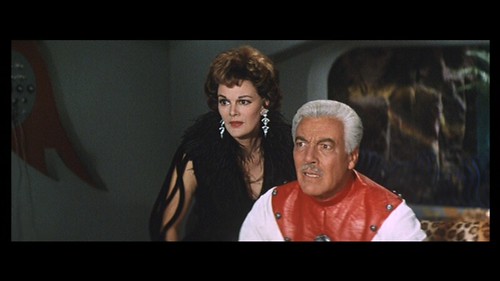
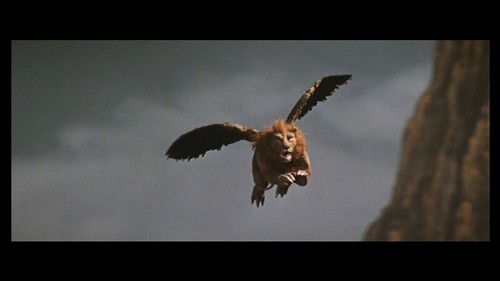

Above Akihiko Hirata and below Linda Haynes and Masumi Okada.



Going from a scientist working with Cesar Romero in an undersea Utopia to a South Pacific Islander.
Tetsu Nakamura was now twelfth billed as either "Island Chief Ombo", or "Supplicator Ombo" in "GEZORA, GANIME, KAMEBA: KESSEN! NANKAI NO DAIKAIJU (GEZORA, GANIMES AND KAMOEBAS: DECISIVE BATTLE! GIANT MONSTERS OF THE SOUTH SEAS) " released on August 1, 1970 in Japan.
The English language version has two much shorten titles of either the "SPACE AMOEBA", or "YOG MONSTER FROM SPACE". Both titles were released one year later, on August 4, 1971, in the United States.
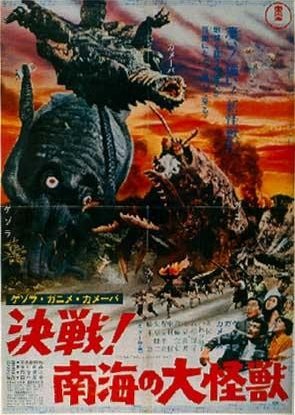



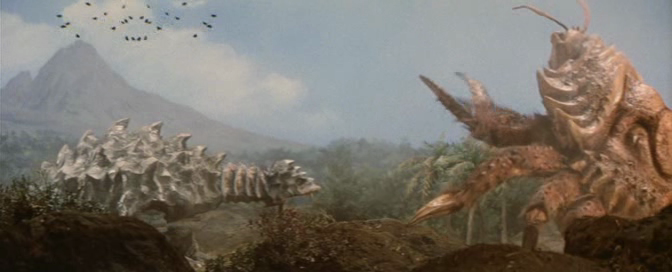
Next found Tetsu Nakamura in a motion picture based upon a true incident involving a specially created Samurai Sword for American President Ulysses S. Grant from the Emperor of Japan.
"RED SUN" was a Euro Western with an American, French, Japanese and Spanish cast and a director from England. Italy also provided some of the funds for the film. The feature was released first on September 15, 1971 in France. It didn't get to the United States until June 9, 1972.
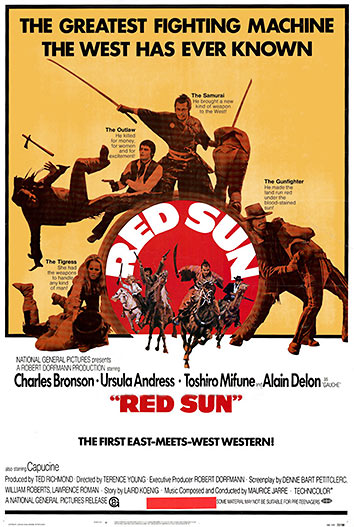
The British director was Terrence Young. Among his films are the first three Sean Connery "James Bond" entries, 1962's "Dr. No", 1963's "From Russia with Love" and 1965's "Thunderball". Young also directed the Charles Bronson feature, 1972's "The Valachi Papers", about the real "Mafia Soldier" who revealed that the crime organization actually existed in the United States.
The Four International Leads
American Charles Bronson portrayed "Link Stuart". Bronson's first major film role was with his real last name "Buchinsky" portraying, just love it, "IGOR", in the 1953 3-D remake of the 1933 "Mystery of the Wax Museum", "House of Wax". He was known for tough guy roles in his early career and had the title role of "Machine-Gun Kelly" in a 1958 gangster film. During a crime film wave that had started with Mickey Rooney as "Baby Face Nelson" in 1957 co-starring with Carolyn Jones. Who had been in "House of Wax". My article "1957 TO 1961 HOLLYWOOD GANGSTER FILMS VS REALITY" may be read at:
http://www.bewaretheblog.com/2016/01/1957-to-1961-hollywood-gangster-motion.html
Swiss-American actress Ursula Andress portrayed "Cristina". The first "Bond Girl" couldn't speak a word of English and for the movie "Dr. No" was dubbed. Her next two films in faulty English were the Elvis Presley 1963 "Fun in Acapulco" and the same years Frank Sinatra, Dean Martin and Anita Ekberg "4 For Texas". For the major 1965 Hammer films version of H. Rider Haggard's classic adventure novel "SHE". Andress had her voice dubbed once more, because she was portraying the title character of "Ayesha, She Who Must Be Obeyed".
Japanese International star Toshiro Mifune portrayed "Kuroda Jubei".
French heart throb Alain Delon portrayed "Gotch 'Gauche' Kink". The world discovered Delon in Italian director Luchino Visconti's 1960 feature "Rocco and His Brothers". In 1963 he co-starred with Burt Lancaster and Claudia Cardinale in Visconti's epic "The Leopard". That was based upon an International Best Selling novel. 1965 saw Alain Delon teamed with Ann-Margaret in "Once a Thief" and in 1966 he co-starred with Anthony Quinn and George Segal in the story of French soldiers in Algiers "Lost Command". Thar same year Delon co-starred with Dean Martin in "Texas Across the River"
French actress Capucine portrayed the small supporting role of "Pepita". Most American audiences knew the actress for the John Wayne and Stewart Granger's 1960 "North to Alaska", 1962's "Walk on the Wild Side" co-starring with Lawrence Harvey and Jane Fonda and as Peter Sellers wife, the only time the character appears, in the original 1963 "The Pink Panther".
Canadian-Japanese supporting actor Satoshi Nakamura portrayed the "Japanese Ambassador".
The story has train robbers "Link" and "Gauche", with their gang, robbing a train and the safe with $400,000 in 1860's dollars. However, the train robbery is also a set up for "Gauche" to kill his partner. After the robbery of the passengers is completed, the two are made aware of a special added coach car at the far end of the train. In it they find the Japanese Emperor's Ambassador to United State's President Grant and a samurai sword that "Gauche" can't keep his eyes off of. One of the two guards is murdered by "Gaughe" and he takes the sword.
After the money from the safe is divided up to enable the gang to ride away. "Link" is still in the box car and dynamite is thrown into it. Leaving "Link" dead, or so "Gauche" believes. He rides off with the rest of the gang. Of course "Link" is alive and is forced to take the Samurai "Kuroda" with him. As he goes after "Gauche" and the others. The two are given one week to retrieve the sword and if they fail. "Kuroda" has been ordered to ritualistically kill himself, but first the American Outlaw.


Above Alain Delon and Satoshi Nakamura. Below Charles Bronson, Satoshi Nakamura and Toshiro Mifune.


Below Bronson, Mifune and Ursula Andress.
For those of my readers who might be interested in the non-Spaghetti American Style European and Asian Westerns. My short article "AMERICAN WESTERNS EUROPEAN STYLE" can be found at:
http://www.bewaretheblog.com/2015/01/american-westerns-european-style.html
On December 23, 1973, Tetsu Nakamura portrayed the Ambassador from the Philippines to the United Nations in the disaster motion picture "NIPPON CHINBOTSU (SUBMERSION OF JAPAN)" . The Toho production originally ran 143 minutes.
In May 1975, the heavily re-edited American version of the Toho film containing added American footage with Loren Greene was released. The film re-titled "Tidal Wave" only had a running time of 82 minutes.


In December 1973 Tetsu Nakamura was a "Sea Captain" in a musical about the adventures of "Marco Polo". The title character "MARCO" was portrayed by Desi Arnaz, Jr. and Zero Mostel co-starred as "Kublai Khan".
On January 26, 1974, Tetsu Nakamura, appeared in the role of "Shirakawa", without on-screen credit, in the three hour and thirty-one minute feature "The Family". Based upon a novel of the same title about the fictional "Manyo" family dynasty. The story is set during the financial restructuring of the country from the Japanese model to the American model.
That feature was followed by the actor's final on-screen appearance. The movie was originally planned for a United States theatrical release, but ended up as a shorten, 95-minute, ABC television feature on February 11, 1997. However, this was an American-Japanese co-production and the original unedited, 106-minute, version in English with Japanese subtitles ran later on Japanese television.
The translated Japanese title of this motion picture, made at Eiji Tsuburaya's studios, was "EXTREME BOTTOM EXPLORATION SHIP POLAR BORA", or also translated as "POLAR PROBE SHIP: POLAR BORA".

However, the motion picture is better known by its original English language title of "THE LAST DINOSAUR".

The actual producers were Jules Bass, Arthur Rankin, Jr. and Noboru Tsuburaya. Noboru was a singer, songwriter, and the television producer of "Ultraman", between 1974 and 1992, and the third CEO of "Tsuburaya Productions".
The story and screenplay was by William Overgard. Later he wrote fourteen episodes of the animated series "Thundercats" and seven episodes of "Silverhawks". Along with five episodes of "Peter Pan and the Pirates".
The Main Cast:
Richard Boone portrayed "Masten Thrust, Sr.". Boone's had four television series: "Medic", 1954 through 1956, "Have Gun Will Travel", 1957 through 1963, "The Richard Boone Show", 1963 through 1964, and "Hec Ramsey", 1972 through 1974 and appeared in many other television programs. There is one motion picture thriller he made in 1958. "I Bury the Living" is very low keyed and will worth finding. Also, the Western "Rio Conchos" with Stuart Whitman, Anthony Franciosa and Jim Brown is well worth a look.
Joan Van Ark portrayed "Francesca 'Frankie' Banks". Van Ark was primary a television actress and appeared on the Soap Opera "Days of Our Lives". After this picture, from 1979 through 1993, she was part of the cast of "Knott's Landing" and went on to the Soap Opera "The Young and the Restless".
Steven Keats portrayed 'Chuck Wade". Since 1973 Keats had appeared on American television shows, but never as a regular. In 1976 he appeared in two forgotten motion pictures "Sky Riders" and "The Gumball Rally".
Tetsu Nakamura portrayed "Dr. Kawamoto".
The plot has "Wade" and his crew drilling for oil in the Polar Ice Caps. They work in a manned ship with a laser drill in its nose. Instead of oil he discovers a tropical jungle area with is super heated by a volcano. All the crew but "Wade" are killed by a giant T-Rex. The title character of the original American film. The Japanese title takes its name from the manned laser drill the "Polar Borer".
Looking at Overland's basic story line. It is hard not to think that William Overland was at least familiar with the Edgar Rice Burroughs' story "At the Earth's Core", or seen the Doug McClure and Peter Cushing 1976 motion picture of the same title. Along with being familiar with the Admiral Byrd expedition and the "Hollow Earth Theory". As used in the very good 1957 Science Fiction picture, "The Land Unknown", complete with tropical area, super volcano and dinosaurs.
Big game hunter "Masten Thrust, Sr." decides to go after the T-Rex and with "Wade", "Frankie", "Dr. Kawamoto", a Maasai tracker named "Bunta" played by Luther Rackley. They take the "Polar Borer" back to the seemingly lost in time area. There they will see flying Pteranodons, a Uintatherium and a Triceratops. Along with living cavemen.



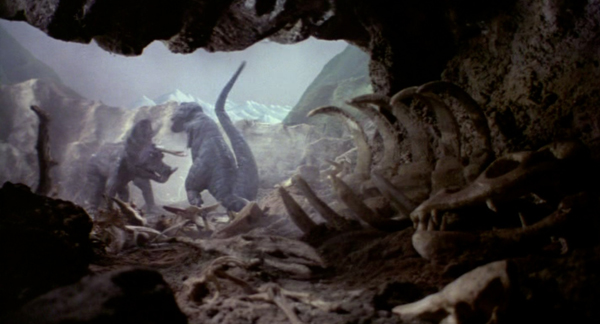


Below Tetsu Nakamura as "Dr. Kawamoto".

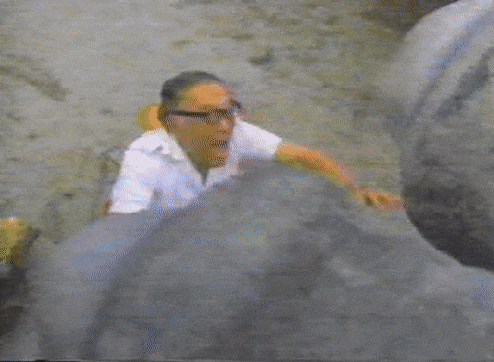

Satsoshi Nakamura passed away on August 3, 1992 in Tokyo Japan, but like many overlooked character actors of all nationalities. He left some interesting performances in a variety of roles and film genres.









No comments:
Post a Comment